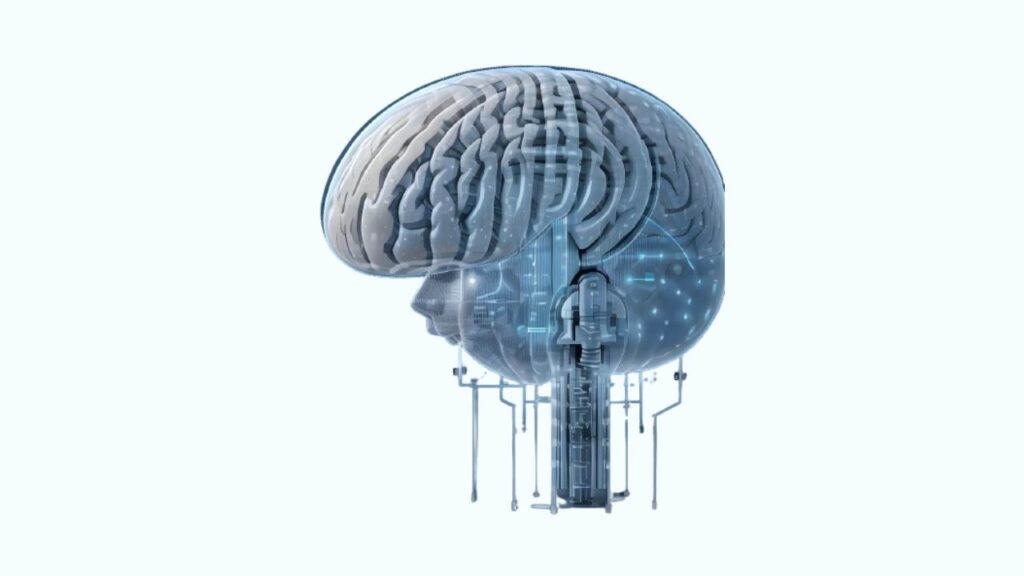In the realm of computer CPU technology, the concept of Brain-Computer Interfaces (BCIs) stands out as a truly revolutionary innovation. CPUs, the core of any computer system, are now being integrated with BCIs to enable direct communication between the human brain and machines, a concept that was once purely science fiction.
The birth of brain-computer interfaces (BCIs) can be traced back to a pivotal moment in history-Hans Berger’s groundbreaking discovery of the electrical signals in the human brain. This discovery, which led to the development of electroencephalography (EEG), was a game-changer.
In 1924, Berger made a significant breakthrough by recording human brain activity through EEG, where he identified distinct oscillatory patterns like Berger’s wave or the alpha wave (8–13 Hz) by meticulously studying EEG patterns.
Initially, Berger’s recording apparatus was basic, involving silver wires placed under patients’ scalps, later upgraded to silver foils secured with rubber bandages. Despite initial setbacks with a Lippmann capillary electrometer, advancements like the Siemens double-coil recording galvanometer, capable of detecting minute electric brain voltages, proved pivotal for success.
Berger’s exploration delved into correlating changes in EEG waveforms with various brain disorders, unveiling novel avenues for studying human brain functions through EEG technology.
What is a Brain Computer Interface? How does it work?
A Brain-Computer Interface (BCI) is not just a technology, it’s a game-changer. It allows individuals to control machines or computers using their brain’s electrical activity. BCIs create a direct communication pathway between the brain and an external device, enabling the translation of brain signals into actions without the need for physical movement.
These interfaces can be attached directly to brain tissue through surgery or worn as a wearable device on the head. By detecting changes in brain activity, BCIs interpret these signals to control various external outputs, such as moving a cursor or controlling a robotic limb, solely through the power of thought.
This revolutionary technology has the potential to completely transform human-computer interaction, offering new possibilities for individuals with disabilities and advancing fields like healthcare and rehabilitation.
Because of this, BCIs are being researched as a promising access technology for people with severe physical disabilities who have limited reliable control over their muscles and bodies.
Brain-computer interface:
A direct communication pathway between the brain’s an external device and electrical activity.
Definition: A direct communication pathway between the brain’s electrical activity and an external device
Research Origins: Research on BCIs began in the 1970s by Jacques Vidal at the University of California Los Angeles (UCLA). Vidal’s 1973 article marks the first appearance of the term brain-computer interface in scientific literature.
Implementations: Implementations of BCIs range from non-invasive (EEG, MEG, MRI) to invasive (microelectrode array)
Neuroprosthetic Devices: The first neuroprosthetic devices implanted in humans appeared in the mid-1990s. A BCI recognizes specific energy/ frequency patterns in the brain.
Recent Studies: Studies in human-computer interaction using machine learning have been successful in classifying mental and emotional states.
The Evolution of BCIs in Computer Technology
The evolution of BCIs in computer technology is a testament to human ingenuity. CPU technology has advanced significantly, paving the way for seamless integration with BCIs. This fusion of technologies has opened up a world of possibilities in various fields, from healthcare to gaming.
The transition from traditional input methods to BCIs marks a significant shift in how we interact with computers. This evolution is evident in the way we perceive and use computer monitors, which have now become windows into the realm of BCI technology.
Enhancing Learning and Productivity
Cloud computing plays a crucial role in supporting (BCI)brain-computer interface applications, enabling real-time data processing and analysis. This synergy between CPU power and cloud computing enhances the learning experience and boosts productivity. As we delve deeper into the realm of BCIs, the traditional computer desk transforms into a hub of innovation and exploration. It becomes a space where computer learning takes on a whole new dimension, bridging the gap between human cognition and machine intelligence.
Embracing the Future of Interaction
In conclusion, the integration of BCIs with computer CPUs represents a paradigm shift in how we interact with technology. From computer monitors to cloud computing, this fusion is redefining every aspect of the digital landscape.
The journey towards a more intuitive and immersive computing experience is underway, fueled by the synergy between BCIs and traditional computer components. As we embrace this future of interaction, the boundaries between machines and humans continue to blur, opening up endless possibilities for innovation and discovery.
What are the different types of brain computer interfaces?
The different types of brain-computer interfaces (BCIs) are categorized based on their invasiveness:
- Invasive BCIs: These are the most accurate types of BCIs. They are implanted directly into the cortex, allowing for precise monitoring of brain activity. They involve inserting electrodes directly into the brain through neurosurgery.
- Partially Invasive BCIs: Semi-invasive BCIs use Electrocorticography (ECoG), a signal platform where electrodes are placed on the surface of the brain. They require a surgical opening but are less intrusive than fully invasive methods.
- Non-Invasive BCIs: Non-invasive BCIs use external sensing methods instead of brain implants. Techniques like Electroencephalography (EEG), Magnetoencephalography (MEG), Functional magnetic resonance imaging (fMRI), Positron emission tomography (PET), and Functional near-infrared spectroscopy (fNIRS) are commonly used for non-invasive BCIs. EEG is the most widely used due to its low cost and portability.
News: Computer Chip in Brain
Elon Musk, founder of Neuralink, announced positive results from their first human trial. The patient, implanted with a brain chip, reportedly recovered fully and can now control a computer mouse using only their thoughts. This news comes from a Reuters report on February 20th, 2024.

